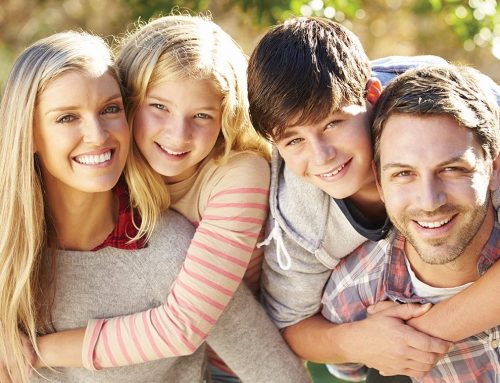These five tips can help us learn to communicate better with anxious kids.
KEY POINTS
- Adults can help children address their anxiety by validating their worries and helping them face their fears directly.
- Learning to sit with anxiety and manage those feelings can help children cope.
- Developing an imaginative conceptualization of their anxiety can help children name and tame their worries.
 Have you ever wondered if your child has anxiety? Or noticed their anxiety increasing since the COVID-19 pandemic?
Have you ever wondered if your child has anxiety? Or noticed their anxiety increasing since the COVID-19 pandemic?
If so, then you’re noticing what the data already bears out. But while a licensed mental health professional will be able to help provide you with individual support, here are some helpful ways to talk to your child about their anxiety.
1. It doesn’t matter if it’s “real” — facts rarely matter
Let’s say you’re at the mall and you hear an intercom announcement that a car matching your car’s description is being towed. Do you feel anxiety? Does the anxiety depend on whether it’s actually your car? At least for a moment, until you are able to check, your mind and body may be filled with racing thoughts and feelings. Similarly, when a child worries about something, there are only rare instances where facts can calm them down. Anyone who has tried showing their young child underneath the bed or in the closet to prove that no monsters reside there knows this to be true. Instead, when a child (or adult!) expresses anxious feelings, respond to the very real anxiety feelings instead of the potentially unreal justification/facts for the anxiety (like a closet monster!).
2. Kids may experience anxiety more physically than cognitively, especially at a young age
Notice your child’s complaints about medically un-verifiable symptoms like fatigue, stomachaches, headaches, coldness/shivers, and a tight chest. Not that you shouldn’t schedule a check-up with your pediatrician! But these symptoms can be particularly frightening for a child who has not experienced anxiety before. And, kiddos have often not yet developed the language skills to express the complex interplay between thoughts, feelings, and sensations that defines the existence of anxiety. Instead, they may say “my tummy hurts on the way to school.”
In this case, pending medical clearance, it’s important to validate that the child’s stomach does hurt. They aren’t crazy! But providing him or her with the language to express their feelings in that instance is valuable. You can model the brain-body connection by responding to a stomachache complaint with “it’s okay to be nervous before school! Lots of kids get nervous for school — I sometimes get nervous when I go to work! I want to listen if you’d like to tell me more.”
3. Confrontation treats anxiety, and you can’t always “think your way out of it”
The one empirically-supported treatment for anxiety: find what you’re afraid of and confront it face-to-face. Easier said than done, I know. But ultimately, all psychotherapies incorporate this philosophy for effective anxiety treatment. Sometimes it’s easy: for a child scared of the dark — gently support them as they become used to being in a dark room, first with you and then alone. For a child scared of dogs — find a dog you can trust and gently guide the child to approach and then pet the dog until their body learns it’s safe. Admittedly, it is sometimes more complex. The child scared of being bullied by peers at school? I wouldn’t advise you arrange their victimization. But that leads me to my next point.
 4. If you can’t fix it, sit with it
4. If you can’t fix it, sit with it
If you can’t fix a fear by confronting it face-to-face, the best medicine is to “sit” with the anxious feelings until your body and brain learn to manage them more adaptively. And for children especially, there is a built-in resource to do this — their parents! Instead of running from anxiety with distractions or “coping” strategies, help your child feel the full weight of their anxious thoughts — temporarily — with your emotional and even physical support (an arm around the shoulder or held hand can go a long way to make a child feel braver). Explore with your kiddo their worst anxious thoughts and just allow the emotions to sit in the room for a while — do nothing! The feeling will dissipate. Think about getting into a chilly pool on a hot summer day. Freezing at first! But refreshing once the body acclimates. You don’t even need words. Just sit.
5. Name it, claim it, and shame it
My personal favorite way to talk about anxiety with kids is to use their incredible imagination to their advantage. Ask: what’s your anxiety’s name? What’s he/she telling you? What does he/she/it look like? You can help your child develop a picture of their anxiety that effectively separates themselves from the anxious feelings and releases them from the shame/guilt of feeling anxious in the first place. After all, the worst part of anxiety is often the secondary feeling of “why is this happening to me! I shouldn’t feel anxious!”
You can help your child develop an imaginative conceptualization of their anxiety with a name, description, and even a personality, then claim this anxiety as “an annoying friend” (I’ve had some kids think of it as an irritating sibling — always around!), and finally, “talk back” to the anxiety. I encourage kids to really let loose their sarcasm, wit, and teasing powers on their anxiety. They may say “shut up! You’re so annoying! You’re a looooooser!” They may give it a silly name to make it seem less scary. I’m proud of my patients when they get to a point where they say, “Well I was having a hard day at school because Reginald told me I was ugly but I just took a little break from my lunch and said to him in my head: ‘Seriously, Reggie? You are being a total jerk and I’m gonna need you to stop’ — he didn’t…. but I laughed to myself about it and went back to eating!”
Who among us can claim to live life without anxiety? Not me. But with good support from trusted adults, our kids can learn to respond to anxiety and stress in a healthy manner.
Retrieved from https://www.psychologytoday.com/us/blog/behavior-problems-behavior-solutions/202210/how-talk-kids-about-anxiety




